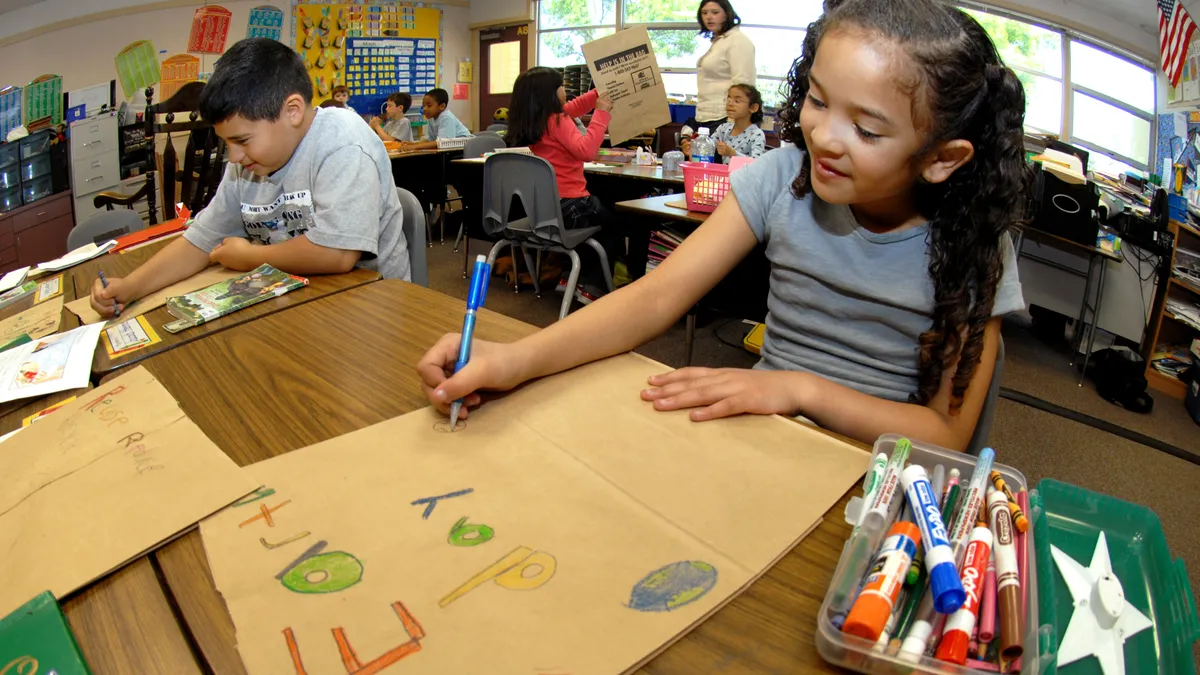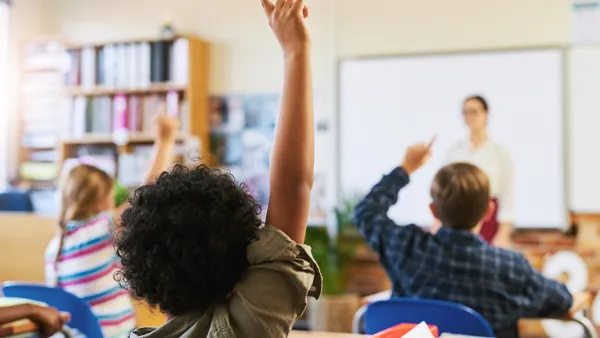Dive Brief:
- Marina Umaschi Bers, professor and chair of Tufts University's Eliot-Pearson Department of Child Study and Human Development, believes educators should create learning environments where classroom technology can be harnessed to enable learning through play, she wrote in EdSurge.
- These tools should create learning "playgrounds" – which allow for more autonomy and choice – rather than "playpens," which Bers says are isolating and limiting. She also discusses her "Positive Technological Development" framework, which includes six "playground" behaviors children can exhibit when using ed tech:
- Content creation
- Creativity
- Choices of conduct
- Communication
- Collaboration
- Community building
- Bers encourages teachers to view their class spaces as art rooms, where children aren’t directed to produce a correct answer, but instead to learn and discover. She also says it's important to embrace failure and, in rethinking assessment, to consider community events – such as inviting parents to see finished projects – as a way for children to take pride in their work.
Dive Insight:
After the early grades of elementary school, students rarely equate time spent in the classroom with fun. That’s arguably unfortunate for a number of reasons: For one, students who view learning as enjoyable may extend their educations and potentially career options. Plus, having fun also affects the brain chemically — helping children focus more keenly on their work and, as a result, engage and participate more in class activities.
Those are the findings noted in a Psychology Today article that says “stress, boredom, confusion” and other negative feelings “…can individually, and more profoundly in combination, interfere with learning,” noted author Judy Willis in a paper called “The Neuroscience of Joyful Education.”
“In addition, when classroom activities are pleasurable, the brain releases dopamine, a neurotransmitter that stimulates the memory centers and promotes the release of acetylcholine, which increases focused attention,” Willis wrote.
Does that mean schools should shift lessons from four-walled rooms to amusement parks? Certainly, field trips and even excursions to an outside classroom environment can provide a new view on a subject, engage students and liven up classwork. But elaborate efforts aren’t necessary to get students re-invigorated and excited about class time. Sometimes, it can come from simpler simpler steps – such as making a topic relevant to students’ interests, or tying what they’re learning to a real-world impact on their lives.
Giving students a chance to see how their educations may affect the world at large may help them find the relevance and joy in their classroom experience. And with technology becoming a bigger part of the educational sector, surveying the possibilities of making tech fun and useful in student learning will serve all parties going forward.






 Dive Awards
Dive Awards






